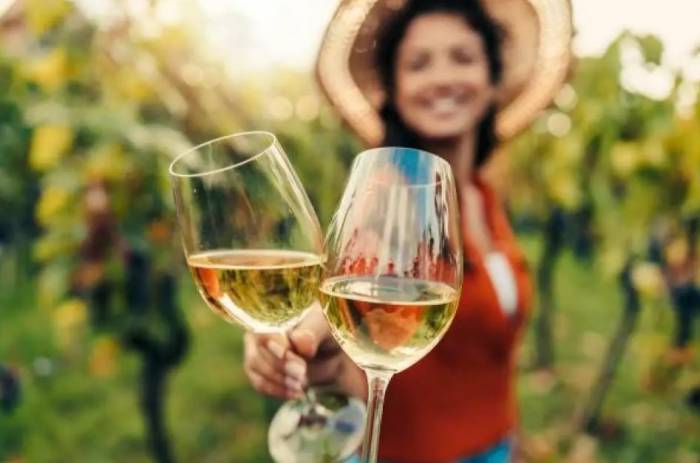Wine tourism drives transformation in Czechia’s wine industry amid climate and economic challenges
Moravian and Bohemian regions embrace tourism to sustain winemaking traditions, adapt to climate change, and attract new generations of consumers
2025-09-03

Wine tourism is playing a growing role in the transformation of wine production and consumption in Czechia, as recent research and industry data show. The country’s wine sector, centered in the regions of Moravia and Bohemia, faces significant challenges from climate change, shifting consumer preferences, and economic pressures. At the same time, wine tourism is emerging as a key strategy for supporting sustainable development and maintaining the cultural and economic vitality of Czech winemaking.
Czechia’s wine industry is concentrated in two main regions: Moravia, which accounts for about 96% of vineyard area, and Bohemia. The Moravian region is divided into four sub-regions—Mikulov, Velké Pavlovice, Slovácko, and Znojmo—covering more than 17,000 hectares and including over 300 recognized wine villages. These areas are known for their unique terroir, with vineyards located on sheltered slopes along river valleys and among the hills of the Bohemian Central Highlands. The fragmented nature of vineyard sites leads to significant variability in soil conditions and vintage quality.
The sector is characterized by a mix of small family-run vineyards and larger commercial operations. Nearly 86% of growers cultivate plots smaller than half a hectare, but since Czechia joined the European Union in 2004, there has been consolidation among larger producers. By 2023, almost 80% of registered vineyards exceeded five hectares.
Despite its long tradition, Czech winemaking faces stagnation or only modest growth. Statistical models based on data from 1993 to 2023 indicate that while vineyard area and total harvest may see slight increases in the next few years, yield per hectare, per capita wine consumption, and overall production are expected to remain flat. In 2023, the cultivated vineyard area reached about 17,750 hectares with nearly 13,300 registered grapevine growers. However, economic uncertainty is discouraging expansion; only about 40 hectares of new plantings were applied for in early 2024 despite a quota allowing for more than four times that amount.
Climate change is having a direct impact on Czech viticulture. The South Moravian region has seen average temperatures rise by about 1.5°C over the past six decades. This warming trend brings longer heat waves and less predictable rainfall, affecting grape yields and quality—especially for white varieties that have traditionally dominated production. Winemakers are adapting by planting disease-resistant PIWI varieties and grafting traditional grapes onto more resilient rootstocks. Some experts warn that if warming continues at its current pace, white wine production could become increasingly difficult in South Moravia, while red varieties may become more viable.
Consumer preferences are also shifting. Historically, Czech consumers favored sweeter wines with residual sugar, but there is now a clear trend toward drier styles. This change is reflected in both retail sales and gastronomy: restaurants across price ranges are increasingly offering curated wine pairings with seasonal menus. The number of specialized wine shops has grown rapidly—over 6,000 by 2018—helped by legislative changes aimed at improving quality control and reducing fraud in bulk wine sales.
Retail chains remain an important distribution channel for domestic producers despite challenging terms and competition from cheaper imports. Local wines account for between 40% and 70% of retail offerings depending on the chain. However, many wineries are diversifying their sales strategies by focusing on direct-to-consumer channels such as online shops and winery events.
Wine tourism has become a central pillar for sustaining the industry amid these challenges. Certified wineries, cellars, and lodging facilities offer visitors authentic experiences tied to local winemaking traditions. The Moravian Wine Trails—a network of over 1,200 kilometers of marked cycling routes—connects hundreds of wine-producing municipalities and provides access to cellar lanes, tasting rooms, educational trails through vineyards, and even lookout towers shaped like wine glasses.
In South Moravia’s tourist hotspots like Mikulov, up to 27% of domestic visitors and over 40% of international tourists participated in culinary or wine-related activities during their stay in 2024—a notable increase from previous years. Wine tourism not only supports local economies but also helps promote regional wines to a broader audience.
Despite these positive developments in tourism and gastronomy, the sector faces ongoing threats: an aging population of winemakers without clear successors; labor shortages for seasonal vineyard work; declining interest among younger generations; and increasing competition from imported wines that benefit from lower costs or tax advantages.
Industry leaders emphasize the need for stable business conditions comparable to those in neighboring countries. They call for targeted state support—such as taxing foreign wines at rates similar to sparkling wines—to level the playing field for domestic producers. Continued investment in international promotion through competitions and advertising is also seen as vital for raising the profile of Czech wines abroad.
Family-run wineries that can pass operations to new generations tend to be most resilient. Many are expanding into hospitality or event hosting to diversify income streams. Meanwhile, some larger producers are withdrawing from retail chain partnerships due to pricing pressures that do not reflect product value or brand positioning.
The future sustainability of Czech viticulture will depend on preserving existing vineyard areas; promoting wine tourism; supporting family businesses; ensuring high standards through specialized retail channels; adapting to climate change; and maintaining strong representation at international competitions.
As global trends point toward declining wine consumption—especially among younger consumers—the integration of tourism with winemaking offers a promising path forward for Czechia’s historic but evolving wine sector.
Founded in 2007, Vinetur® is a registered trademark of VGSC S.L. with a long history in the wine industry.
VGSC, S.L. with VAT number B70255591 is a spanish company legally registered in the Commercial Register of the city of Santiago de Compostela, with registration number: Bulletin 181, Reference 356049 in Volume 13, Page 107, Section 6, Sheet 45028, Entry 2.
Email: [email protected]
Headquarters and offices located in Vilagarcia de Arousa, Spain.